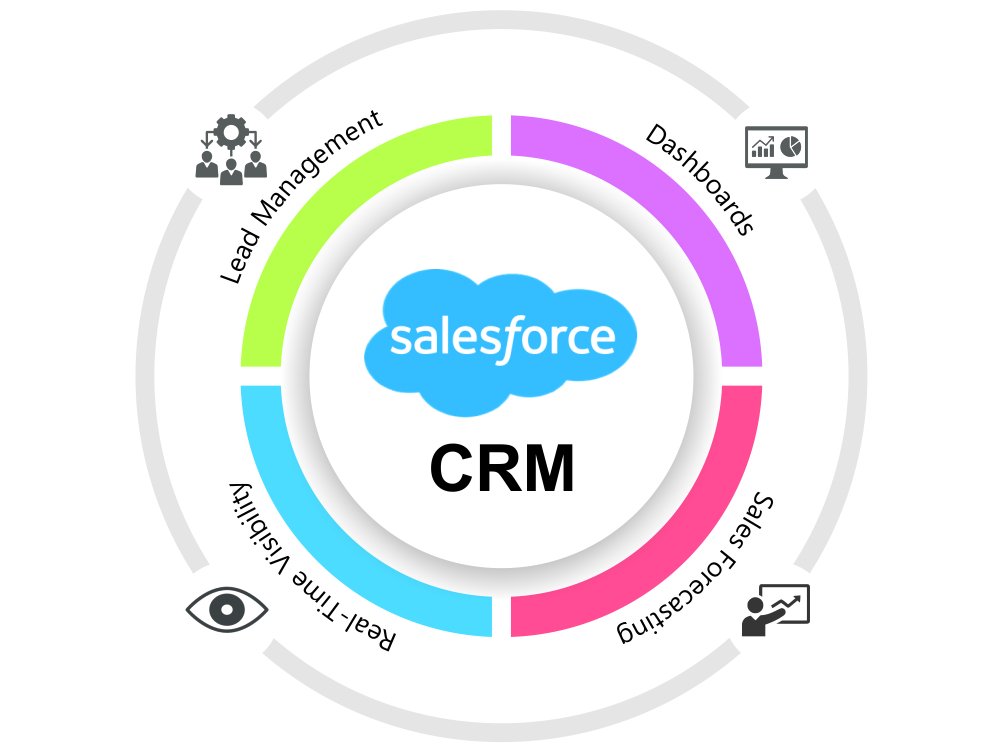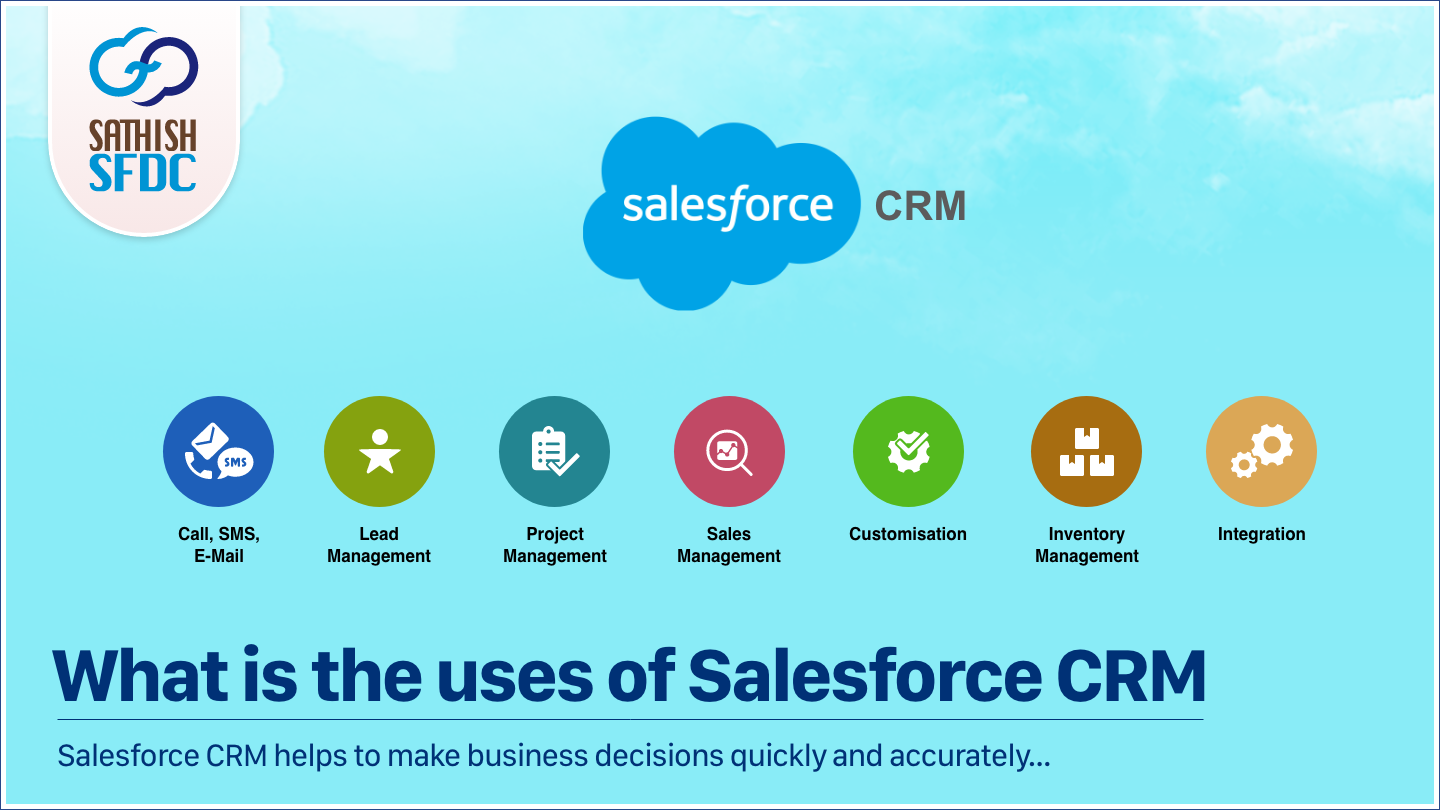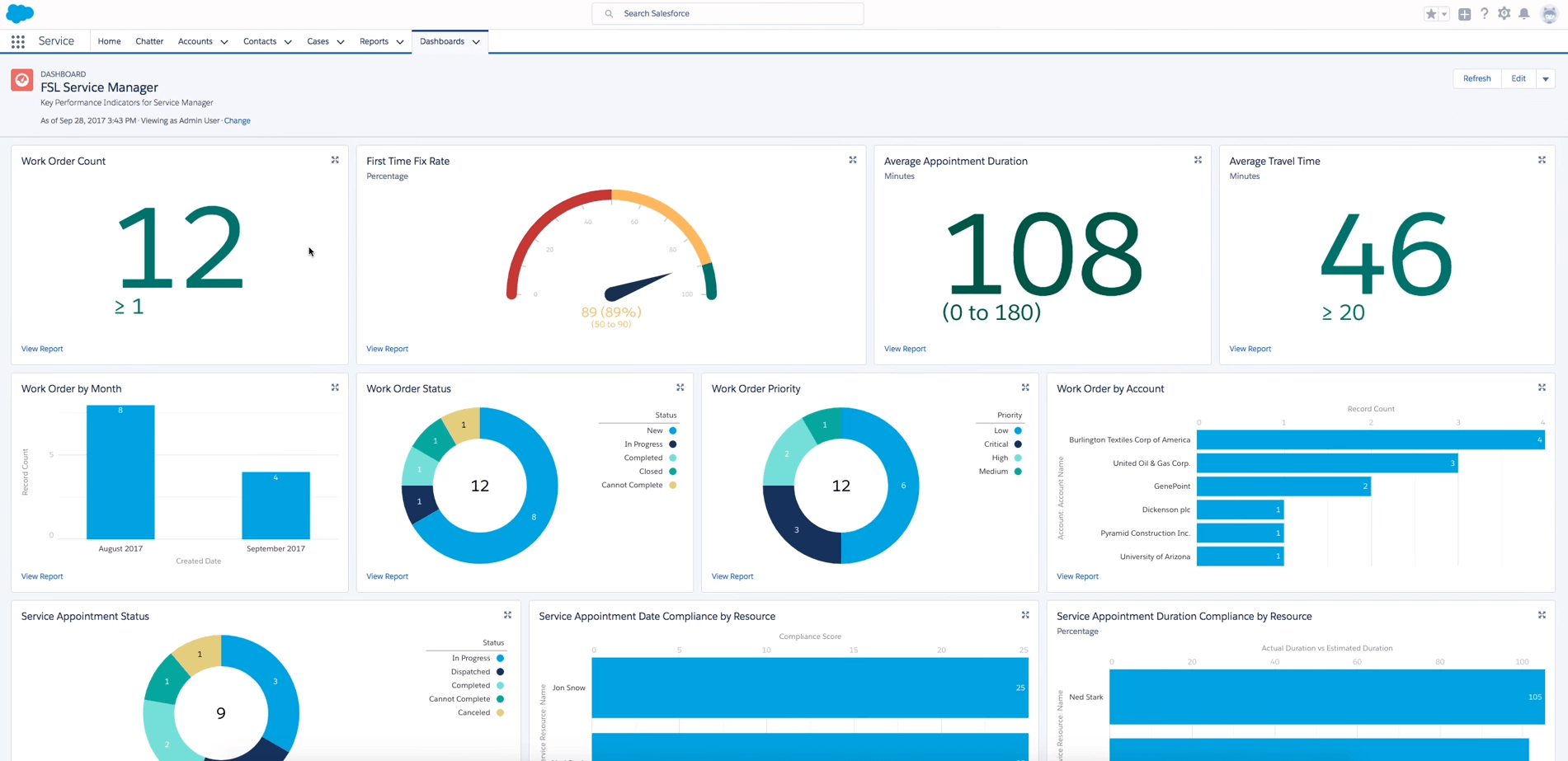Exploring the Power of Salesforce CRM
Embark on a journey into the world of Salesforce CRM, a powerful tool revolutionizing customer relationship management for businesses of all sizes. From its inception to its impact across various industries, this overview promises to provide a comprehensive understanding of Salesforce CRM.
Introduction to Salesforce CRM

Salesforce CRM, or Customer Relationship Management, is a cloud-based software solution designed to help businesses manage customer interactions, track leads, and streamline sales processes.
Importance of CRM Systems in Businesses
CRM systems play a crucial role in businesses by centralizing customer data, improving communication with clients, and enhancing overall customer experience.
- CRM systems help businesses analyze customer interactions and improve relationships.
- They enable companies to track sales opportunities, monitor marketing campaigns, and forecast sales trends.
- CRM systems streamline processes, increase efficiency, and boost productivity within organizations.
Examples of Industries Using Salesforce CRM
Various industries across the globe benefit from implementing Salesforce CRM to enhance customer relationships and drive business growth.
- Retail: Retail businesses utilize Salesforce CRM to manage customer data, track purchases, and personalize marketing strategies.
- Financial Services: Banks and financial institutions leverage Salesforce CRM to improve customer service, automate workflows, and analyze financial data.
- Healthcare: Healthcare providers use Salesforce CRM to streamline patient interactions, manage appointments, and track medical records.
- Technology: Tech companies implement Salesforce CRM to manage leads, track customer support tickets, and analyze sales performance.
Key Features of Salesforce CRM
Salesforce CRM offers a wide range of features designed to help businesses effectively manage their customer relationships and drive sales. Let's explore some of the main features of Salesforce CRM and how they compare to other CRM software in the market.
Data Management and Integration
Salesforce CRM allows businesses to centralize customer data, making it easier to track interactions and preferences. It also offers seamless integration with other applications, streamlining processes and increasing productivity.
Customization and Scalability
One of the key strengths of Salesforce CRM is its high level of customization. Businesses can tailor the platform to their specific needs, from creating custom fields to building complex workflows. Moreover, Salesforce CRM is highly scalable, making it suitable for businesses of all sizes.
Automation and AI
Salesforce CRM leverages automation and artificial intelligence to help businesses automate repetitive tasks, such as data entry and lead scoring. This not only saves time but also enables sales teams to focus on building relationships and closing deals.
Mobile Accessibility
With the Salesforce mobile app, users can access customer data, track sales activities, and collaborate with team members on the go. This level of mobility ensures that businesses can stay connected and productive, regardless of their location.
Analytics and Reporting
Salesforce CRM provides robust analytics and reporting tools that enable businesses to gain valuable insights into their sales performance and customer behavior. This data-driven approach helps businesses make informed decisions and optimize their sales strategies.Overall, the features of Salesforce CRM set it apart from other CRM software by offering a comprehensive solution that combines data management, customization, automation, mobility, and analytics.
These features benefit businesses by empowering them to better understand their customers, streamline processes, and drive growth.
Implementation of Salesforce CRM
Implementing Salesforce CRM in an organization is a crucial process that requires careful planning and execution to ensure successful adoption and utilization of the platform.
Key Steps in Setting up Salesforce CRM
- Assessing Business Needs: Conduct a thorough evaluation of your organization's requirements and objectives to determine how Salesforce CRM can address them.
- Customization and Configuration: Tailor Salesforce CRM to align with your specific business processes and workflows by customizing fields, layouts, and automations.
- Data Migration: Transfer existing data from legacy systems to Salesforce CRM while ensuring data integrity and accuracy.
- User Training: Provide comprehensive training to all employees to familiarize them with the platform and maximize user adoption.
- Testing and Deployment: Conduct thorough testing of the system to identify and resolve any issues before rolling out Salesforce CRM across the organization.
Best Practices for Successful Implementation
- Executive Sponsorship: Secure buy-in from senior leadership to ensure support and commitment throughout the implementation process.
- Engage Stakeholders: Involve key stakeholders from different departments to gather feedback and perspectives, ensuring alignment with organizational goals.
- Iterative Approach: Implement Salesforce CRM in phases to allow for continuous improvement and refinement based on user feedback and evolving business needs.
- Data Quality Management: Prioritize data accuracy and cleanliness to enhance the effectiveness of Salesforce CRM and drive informed decision-making.
- Ongoing Support and Maintenance: Establish a support structure to address user queries, provide ongoing training, and maintain the system for long-term success.
Customization and Integration with Salesforce CRM

Customizing Salesforce CRM and integrating it with other tools and systems are crucial for businesses to maximize efficiency and meet specific needs. Let's explore the options available for customization and the process of integration.
Customization Options for Salesforce CRM
- Custom Fields and Objects: Businesses can create custom fields and objects in Salesforce CRM to capture unique data points relevant to their operations.
- Workflow Automation: Utilize workflow rules to automate repetitive tasks and streamline processes within the CRM.
- Custom Apps: Develop custom applications using Salesforce App Cloud to extend the functionality of the CRM platform.
- Visualforce Pages: Design custom user interfaces and dashboards using Visualforce to enhance user experience.
Integration Process with Other Tools and Systems
Integrating Salesforce CRM with other tools and systems allows for seamless data flow and improved collaboration across different platforms. Here is an overview of the integration process:
- Evaluate Integration Needs: Identify the tools and systems that need to be integrated with Salesforce CRM to achieve specific business goals.
- Choose Integration Method: Select the appropriate integration method such as API-based integration, middleware integration, or pre-built connectors.
- Develop Integration Strategy: Create a detailed integration strategy outlining data mapping, synchronization, and workflow automation between Salesforce CRM and other systems.
- Testing and Deployment: Thoroughly test the integration to ensure data accuracy and system compatibility before deploying it for regular use.
Popular Integrations with Salesforce CRM
- Salesforce Integration with Microsoft Outlook: Enables seamless synchronization of emails, contacts, and calendars between Salesforce CRM and Outlook for enhanced productivity.
- Salesforce Integration with Slack: Facilitates real-time communication and collaboration by bringing Salesforce data directly into Slack channels for team visibility.
- Salesforce Integration with Zapier: Allows for easy automation of tasks by connecting Salesforce CRM with over 2,000 apps supported by Zapier.
Use Cases and Benefits of Salesforce CRM
When it comes to real-world applications, Salesforce CRM has proven to be a game-changer for numerous companies across various industries. Let's delve into some use cases and benefits of utilizing Salesforce CRM:
Improved Customer Relationships
- One of the key benefits of Salesforce CRM is its ability to centralize customer data, allowing businesses to have a 360-degree view of their customers. This enables companies to provide personalized and targeted marketing campaigns, leading to increased customer satisfaction and loyalty.
- Companies like Coca-Cola have successfully leveraged Salesforce CRM to streamline their customer interactions and improve overall customer relationships.
Enhanced Sales Performance
- Salesforce CRM provides powerful tools for sales teams to track leads, manage opportunities, and close deals more efficiently. This results in improved sales performance and higher revenue generation.
- A prime example of this is Siemens, a global conglomerate, which saw a significant increase in sales productivity after implementing Salesforce CRM.
Increased Productivity and Collaboration
- By utilizing Salesforce CRM, organizations can automate repetitive tasks, streamline processes, and foster collaboration among teams. This leads to increased productivity and efficiency within the company.
- For instance, Airbnb has experienced enhanced productivity and collaboration among its employees by implementing Salesforce CRM into their operations.
Ending Remarks

In conclusion, Salesforce CRM stands as a game-changer in the realm of customer relationship management, offering unparalleled benefits to organizations. By leveraging its key features, customization options, and real-world success stories, businesses can truly transform the way they engage with customers and drive growth.
FAQ
What industries commonly use Salesforce CRM?
Some industries that commonly use Salesforce CRM include technology, healthcare, financial services, and retail.
How can businesses benefit from implementing Salesforce CRM?
Businesses can benefit from Salesforce CRM by improving customer relationships, streamlining processes, increasing sales efficiency, and gaining valuable insights into customer data.
What are the key steps involved in setting up Salesforce CRM?
The key steps in setting up Salesforce CRM include defining objectives, configuring the system, importing data, training users, and continuously optimizing usage.